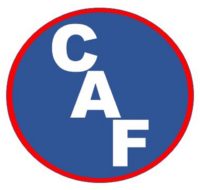Surfactant – Surface Active Agent. Basically, it changes the surface of the water.
There are currently three sources for surfactants:
- Animal – Protein – soaps.
- Mineral – Hydrocarbon Derivitives – detergents, synthetic
- Vegetable – This includes new Soy derivitives. There are small aerosol cans on the market designed for small fire use in the home.
From 1877 to about 1930, foams were chemical – 2 chemicals when mixed created CO2 for application pressure to expell bubble foam. Chemical foams were known as “Foamite” and could be found in small extinguishers or mixed in volume in a 2-part hopper. In 1930, Mechanical Foams came about consisting of a liquid foaming agent (Conc) added to water (W) and (A) air. Prior to the late 1970’s, these firefighting foams were animal/protein based. Since then, most common firefighting foam concentrates came from hydrocarbon derivitives.
Firefighting Foam “Concentrates” are “Surfactants”.
All foam surfactants basically start the same, then additional chemicals (Chemistry) are added to cause each kind of surfactant to achieve the specific desired outcome. While all surfactants start out the same, it is the changes made that make the different surfactants different animals – meaning they are not compatible nor interchangable. This is why Class A surfactants and Class B surfactants could not substitute for each other. The added chemistries take them down different paths to perform different functions. Interchangability can be inefficient, dangerous or even disasterous.
Fire personnel must understand that these differences exist. Each type of surfactant is a tool for a different purpose. Using the wrong tool can give the wrong results.
For a good primer on surfactants – see An Easy Guide to Understanding How Surfactants Work!
For the fire science perspective:
- Class A Foams are anionic surfactants. Carbon loving, reduced surface tension.
- Class B Foams are nonionic or amphoteric with added Florine (Forever Chemicals) to create a film over the hydrocarbon fuel. Fluorine foams repelled carbon. Fluorine foams are being completely banned by October 2024. The new B-Foams usebubbles only to supress the vapors.
- Class A/B foams are also nonionic and amphoteric with the fluorine removed. The foam blanket uses only bubbles (not a film) to suppress the flammable vapors. The foam blanket is not self healing. Any breaks in the foam must be addressed with additional application.
Due to the banning of the market staple flourine based foams, there are now many different kinds of surfactants on the market. The firefighting foam market is wide open and the specs relating to firefighting foams are in flux as there are no new foams that meet the old Class B standards/specs. Many manufacturers are working to get the next staple product on the market but testing is complicated, especially with no new specific standards. So, BUYER BEWARE!!!! What might seem to be the best option today may not be tomorrow. This is a real problem if a department purchases a bulk amount of a product only to find that it might not meet the future new specs when the market settles down. (Note – bulk is relative to the size of a department and the size of the corresponding budget).
Also keep in mind that this surfactant issue is a Class B issue and does not affect the original Class A Foam market. The acceptable Class A Foam surfactants (concentrates) are still acceptable for Class A fire.
The confusing issue is in the A/B market. There are many different A/B foams – no two are alike. None (according to current research) are quite as effective on Class B fires as the banned flourine (forever chemicals) foams. The market is still working out what will be the new foam standard.
NOTE: While the Class B foam market sorts out the issues, specs and acceptable Class B products, CompressedAirFoam.com recommends continuing with the use of Class A foam concentrates for the best effect on Class A Fire and then purchasing and DIY – Performance Evaluating [link] small amounts of the available Class B capable foams. Keep in mind that Performance Evaluation means getting out and working with the product to see what it will and will not do. Research is showing that A/B foams do not work the same as the banned flourine B-foams. Firefighters can be both caught off guard and possibly put into a dangerous situation if they are not aware of the differences and try to test a foam product for the 1st time on a real emergency. DO NOT ever take a sales person’s word on any product. Get out and work woth it. DO NOT put the product on the engine and assume it will do what you want on the first emergency.





































